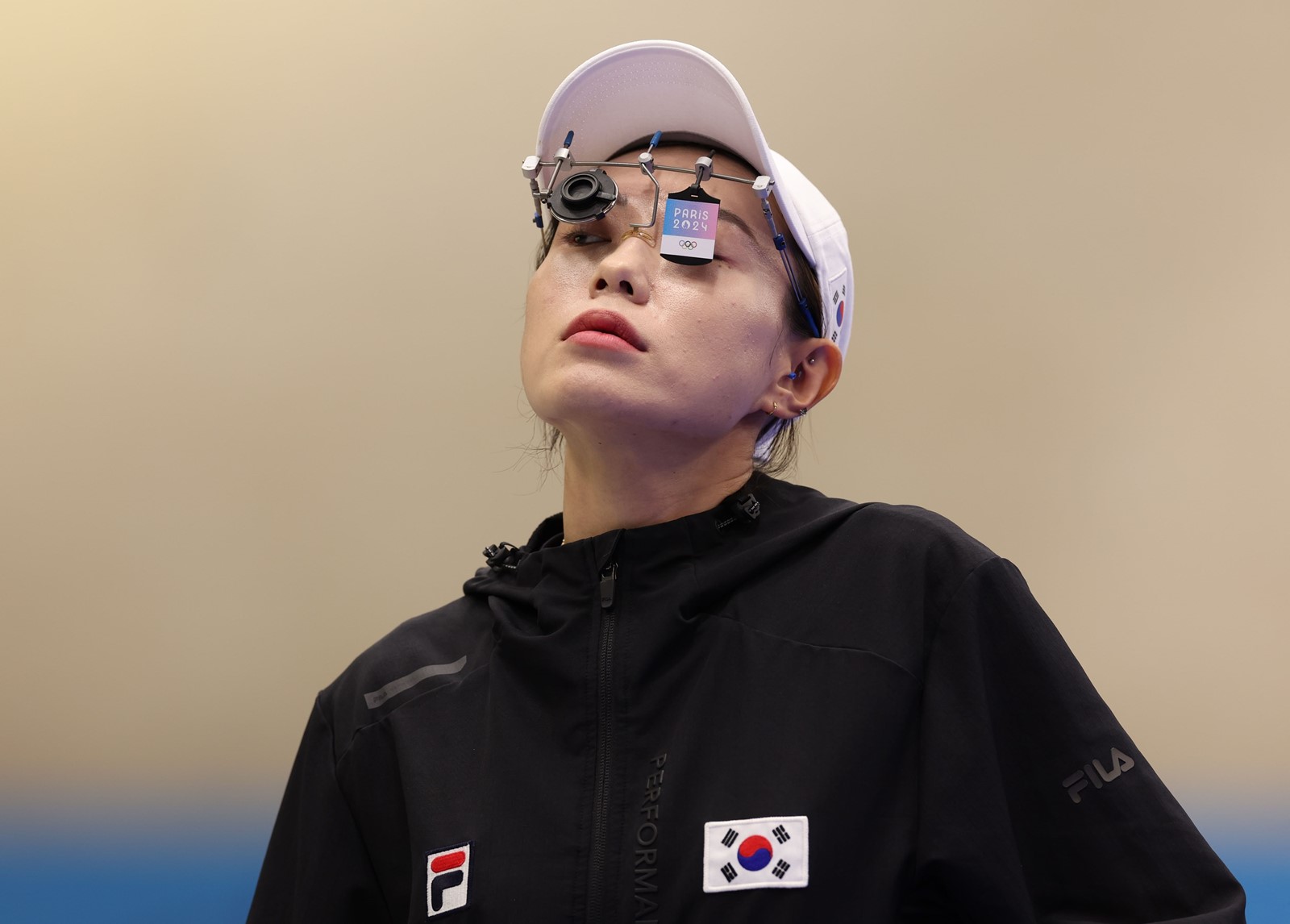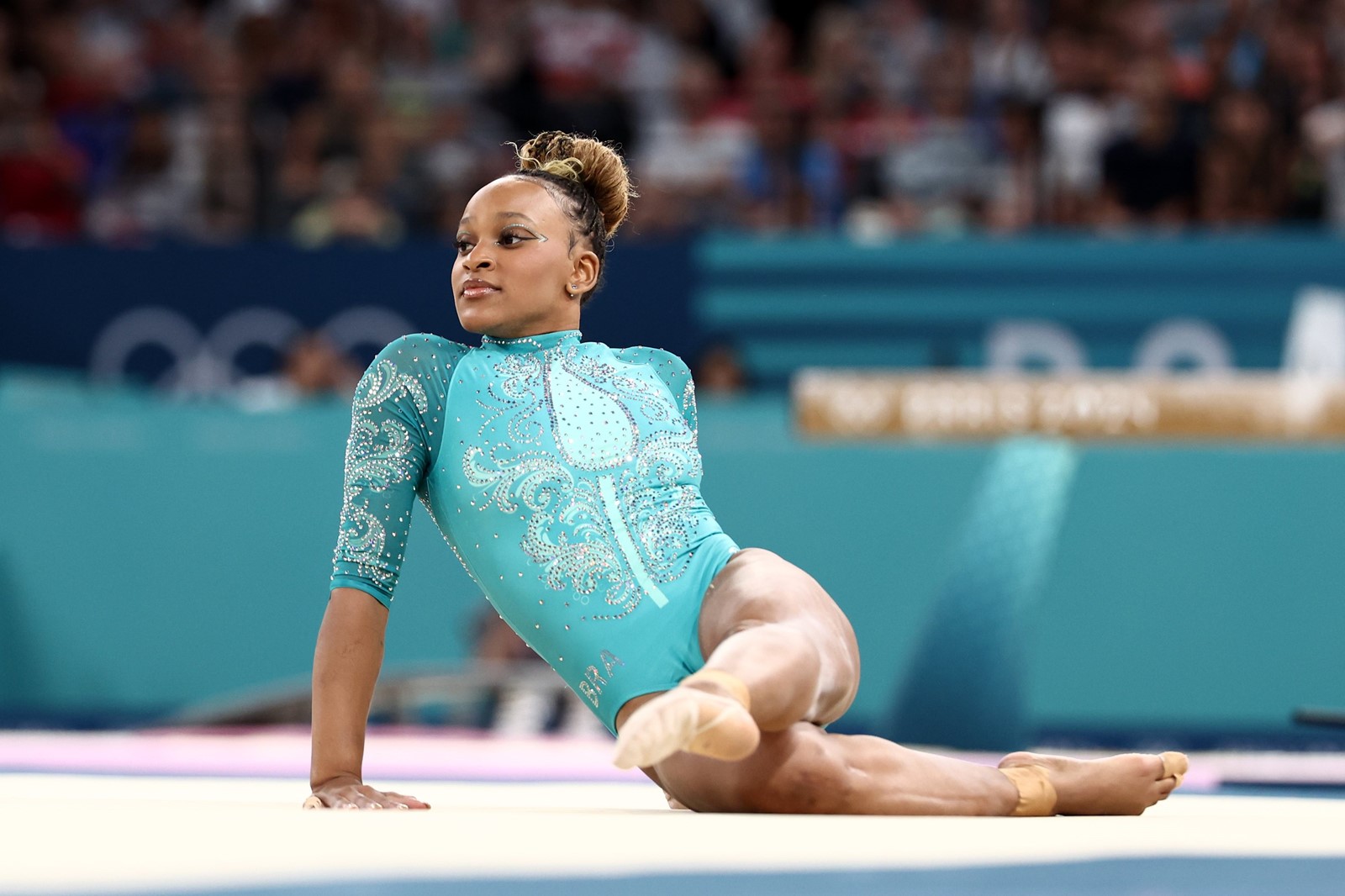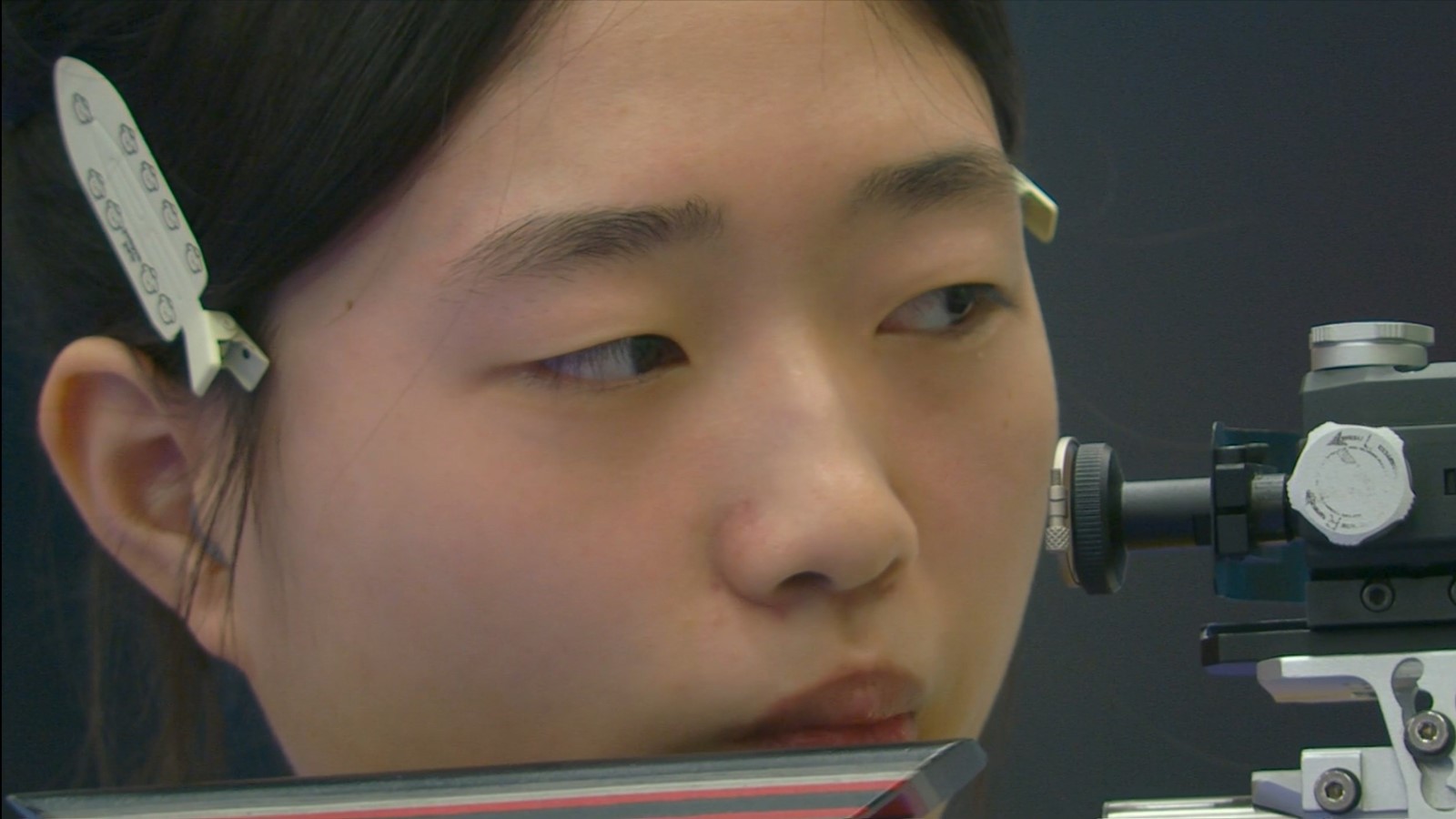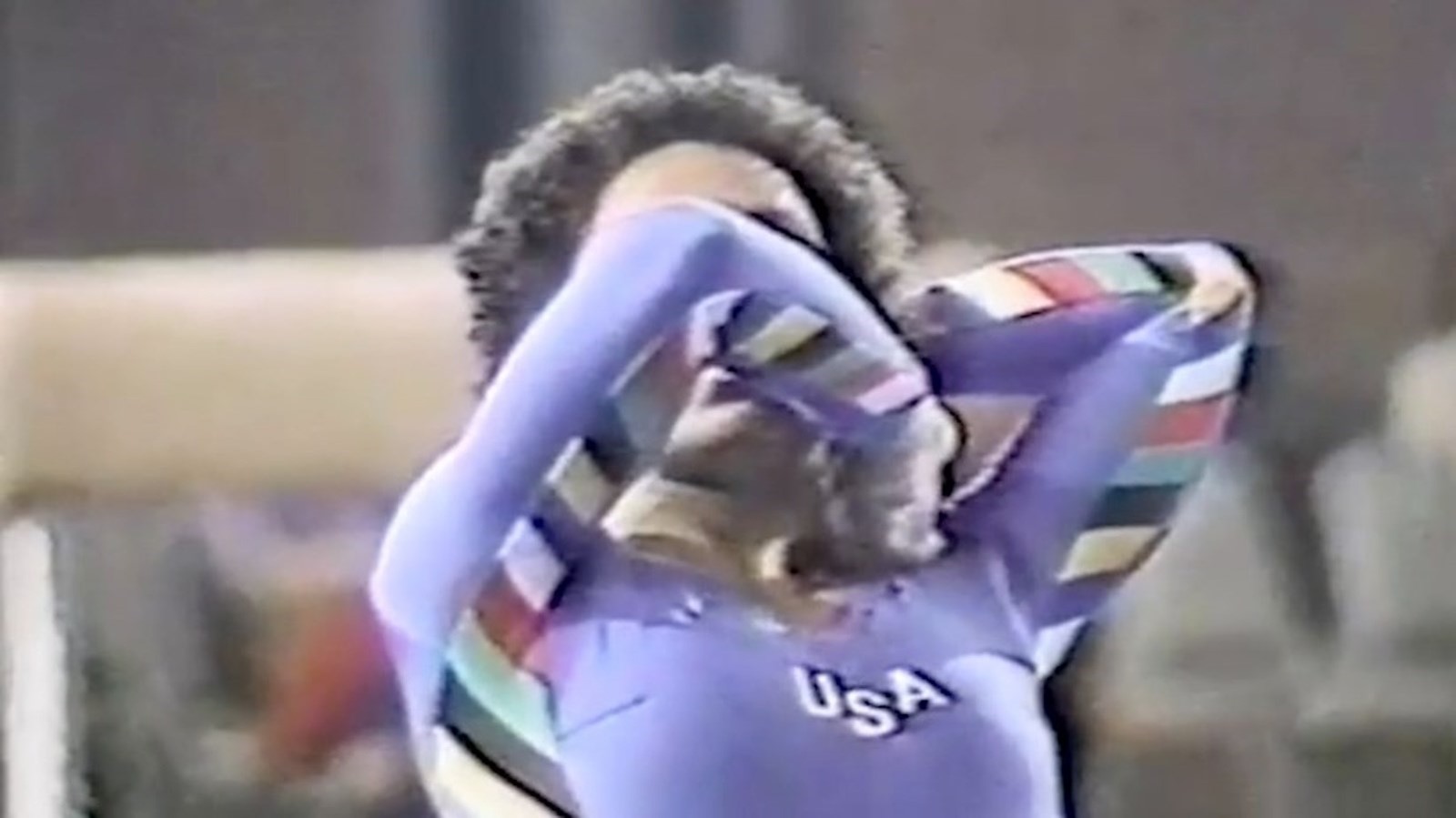There’s something about summer that always brings back the feeling of being a teenager. For the fourth season of Girlhood Studies, Claire Marie Healy examines the close relationship between girlhood and the summertime: as we experience it in our lives, and re-experience it through visual culture. This edition will publish weekly, with one for every week of the school holidays.
This week, I was entranced by two contrasting sets of imagery of teenage girls competing at the Paris Olympics: girls with guns, and girls who fly.
The former circulated widely on social media, especially in the form of 31-year-old sharp shooter Kim Yeji, whose cool demeanour transported viewers in the 10m Air Pistol final (her teenage roommate, fellow Korean Oh Ye-jin, took home the gold that day). But it was the way the Olympian carried her daughter’s elephant doll on her waist, among a monochromatic and androgynous Fila-sponsored look, that got me thinking about how the signifiers of girlhood are displayed at the Olympics.

In sports, a person’s age always draws some focus, but when it comes to young women in gymnastics, it is especially emphatic. On the floor, the bars, and the beam, girls are observed as remarkable in how they handle pressure, and the world’s eyes on them, “despite” being only 16, or 17. If they make mistakes, the pressure of the day is said to have “got to them”, or if they score highly, they are praised as “composed” beyond their years.
Watching gymnasts across the vault, uneven bars, balance beam and floor exercise this week – teenagers like Manila Esposito of Italy, Zhou Yaqin of China, and the French-Algerian Kaylia Nemour among them, as well as names like Brazilians Rebeca Andrade, Flávia Sariva and US teammates Jordan Chiles, Simone Biles and Sunisa Lee – I kept hearing another theme in how these women’s feats were spoken about: people were drawing comparison between their actions and their appearance (I realise that these names are not all teenage girls: the point being, here, to examine the aesthetics and ideas of girlhood that swirl around us even when are no longer, technically, adolescent). When a performance sparkled, like Rebeca Andrade’s in the floor final, it was said to be “as sparkling as her leotard”, comments made, on the BBC coverage at least, by an excited middle-aged man who sounds, admittedly, like Johnny Vegas (in actuality Craig Heap). When some members of the US Gymnastics team competed in solo categories, after having won gold as a quintet, the commentator notes that it is “nice to see” that they have picked out their own leotards for the individual rounds.
Why does that idea – that they might get to choose what they wear – matter to us?

In gymnastics, the association of competitors with the hyperfeminine is a cultural standard. Its gaze on a girl’s bodily talents is tied up in an (implicit) judgement of her hair, her make-up, her sparkle. And when we watch them at home, we are actively instructed to look out for the individual personalities via such signifiers. That is what “artistic” gymnastics is also actually about: personality. Part of Simone Biles’ power, for instance, is our sense that spiritually she will always be a little bit extra. She is all about difficulty, in any category. Biles holds attention because she breaks out of some of gymnastics’ rigid ideological bounds in much the same way as its physical ones: she tumbles right outside the lines.
Observing eyes, pressure points, calls to action, and an articulation of the self through fashion: gymnastics is like watching girls self-actualise on loop.

That’s one reason why the shooting, I think, has caught people’s imaginations: and why, beyond the memes, its images captured something of how the “girlish” is understood on the sporting stage – the way its details glint at us, in-between all the necessary strictures. As in figure skating or ballet, for better or worse we have an established language for describing the girl-coded strength that defines gymnastics. But in categories such as pistol and rifle shooting, such imagery and meaning-making seems uncoalesced: the evident contradictions are not so neatly assimilated.
Instead of the sky, we have a tight frame. Instead of movement, we have stillness: stiffness even, in the case of the heavy protective suits the rifle shooters have to wear, meaning the girls resemble a motocross gang in blue, yellow, red and white striped leathers complete with punk-ish silver studs (the gear is so heavy the girls cannot even make their exit elegantly when they concede defeat). In fact, preparing to shoot, what struck me was the framing. The girls appeared like a series of portraits on a gallery wall.

The framing may be exact, but here the accessories of girlhood were yet more visible – and yet more charged with the personal. I loved Alexandra Le of Kazakhstan’s red-dyed hair in buns; Ramita Jindal’s of India’s visor was covered in various colourful pins like a Girl Scout’s. In the teen girl shoot-off for Gold between China’s Huang Yuting (17) and Korea’s Ban Hyo-jin (16) I looked at the former’s hair slides compared to the latter’s fringe hair sticking out over her visor, and wondered if that bothered her. Even the tied-back hair, universal for reasons of practicality, speaks to one of the very earliest gestures – for most of us – of changing our appearance. What’s more, in the beats before the shot is taken, the camera rests on these details: we can take them in, spend time with them. In slow-motion, we watch the girls literally negotiate an adult voice in their earpiece with their own inner voice.
Samantha Colllinge has written about the trope of the “Cinderella” moment that is seen in films about girls who play sports, just as much as in the traditional high school drama that ends in the triumph of prom night: such moments of sportsmanship “shift emphasis onto the flesh of the girl body”; the girl-body in action generating “kinaesthetic pleasures attached to feelings of power, flow and fellow feeling” as we watch. While listening to the commentary in the rifle shooting, it struck me that something else was going on: with their heavy protective gear and static framing, the flesh of the girl body was somehow, for once, nothing to do with it. Their bodies are (literally) protected; the moment of “performance” takes place in a mere second. It’s all in the build-up.
One work which extracts the build-up from the performance in gymnastics is Suspension (2020), which you can view online here. In Thenjiwe Niki Nkosi’s beautifully cut short, the artist cuts together imagery of Black and Brown elite gymnasts from all over the world in the moments just before their routines commence. Something about bringing them all together like this, through time, takes the breath away. The throughline is the nerves, the intake of breath: and the hairslides, the ponytails, the eyeliner, the shine.

After that inhale there’s an exhale – and potential triumph. Beyond all these images circulating of girls in competition with one another, there was another this week that felt instantly iconic: Simone Biles and Jordan Chiles of the American team, bowing to Andrade on the podium, the first time three Black women gymnasts have been seen there at the same time, at any Olympics.
